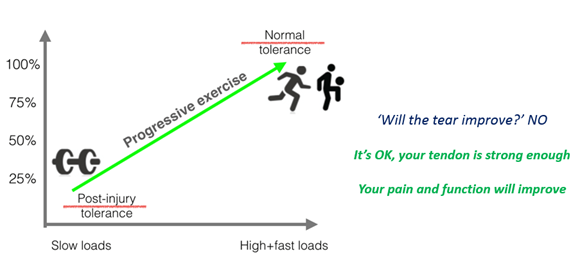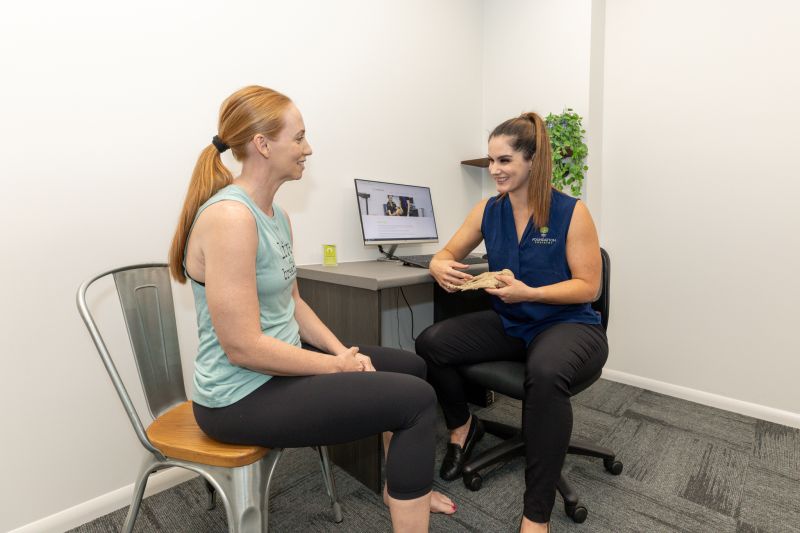More pages in this section
Tendinopathy
What is tendinopathy?
- Tendinopathy most commonly means abnormal tendon tissue and pain
- The pain is usually worse during or after activity
- Some people have ‘stiffness’ in the morning or after rest
Why do we have tendons?
- Tendons transfer forces from the muscle to the bone to allow us to move
- Long ropey tendons like the Achilles often become painful because they absorb forces

Some tendons absorb forces
Think about tendon like a spring or a buffer. Some, like the Achilles tendon absorb stretching forces and then release this energy again when we move. Others, like the supraspinatus in the shoulder mainly absorb pressing forces. These tendons have an important job in dealing for forces in the body, but if the forces are excessive tendinopathy can develop.
What causes tendinopathy?
Many factors may contribute. Some we cannot change, such as:
Age: tendons become less able to repair themselves with age so the risk of injury increases.
Genetic predisposition: certain genes can increase the risk of tendinopathy. You may be more susceptible if other people in your family are also affected.
Your body alignment: how your bones are aligned may be a risk factor for tendinopathy. The good news is usually these factors only increase the risk slightly.
There are some factors we can change to reduce the risk of tendinopathy:
Activity: Doing too much walking, running, jumping, or repetitive arm use is a risk factor. These activities produce high tendons loads at fast speeds.

Obesity: excess weight increase load on your leg tendons, but also obesity may increase risk via biochemical mechanisms.
Elevated cholesterol: high cholesterol is a risk factor for tendinopathy. Aerobic exercise, diet and medication may help you overcome tendinopathy.
Hormones: women are more susceptible around menopause. This is probably due to reduced estrogen levels at this time.
Muscle weakness: weak muscles are unable to protect the tendon and this can increase loads on the tendon and the risk of tendinopathy.
Biomechanics: the way that you move as well as your joint flexibility may place increase loads on your tendons and increase injury risk.
Should I be concerned about pathology?
One of the most important messages that you can take away from this education is that pathology is not clearly related to pain. This is how the pathology story goes, please commit it to memory….
- Pathology is common in people without pain
- Even with very severe pathology your pain can improve
- Painful and pathological tendons hardly ever tear suddenly
- Pain does not equal damage
How can you treat tendinopathy?
Only exercise can increase load tolerance

What should I expect with exercise?

Advice about physical activity
Initially you may need to reduce activities such as running and walking that are very painful until you have improved your load tolerance.
Then you can GRADUALLY resume these activities.
Monitoring your activity with a fitbit or exercise diary can be helpful to make sure you are not progressing too quickly.

Self-help strategies
If you have a mini-flare you can try the following:
Reduce your activity for 2-3 days to allow pain to settle
Ice or heat
Anti-inflammatory medications if the pain is strong
Self-massage or foam rolling

What else may help pain
General physical activity or cross training like swimming or cycling
Managing stress with mindfulness, meditation, relaxation, breathing techniques or yoga
Managing sleep with strategies such as reading and limiting screen time prior to bed, medications like melatonin










